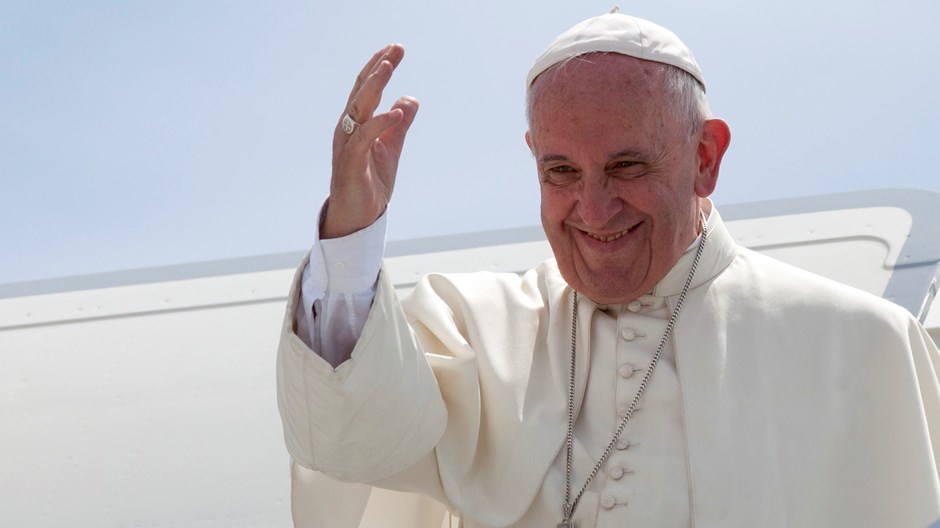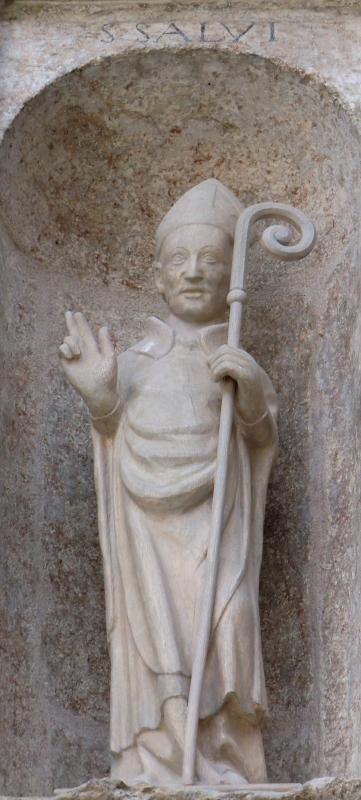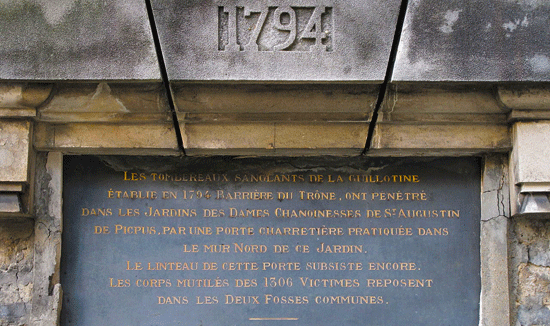(Filippo Monteforte/AFP/Getty Images)Pope Francis on Tuesday announced sweeping revisions to the Catholic Church’s marriage annulment process, changes that are designed to speed up and simplify the often lengthy procedure. The changes, according to Vatican experts, appear to be the most far-reaching made to the church’s annulment process in centuries.
The announcement, containing changes that will make it easier for Catholics to remarry, comes about a month before a major meeting at the Vatican, where Catholic leadership will examine the church’s views on family issues, including divorce and remarriage.
The
changes will eliminate a requirement that all annulment decisions get a second judgement and will allow local bishops to expedite the annulment process for some cases. The revisions also expand the local bishop’s role in judging nullification proceedings. Although dramatic, the changes do not alter the Catholic Church’s teaching that marriages are permanent.
The revisions were announced in two Apostolic Letters from Francis, which, translated from their Latin titles, are called “The Gentle Judge, The Lord Jesus” and “The Meek and Merciful Jesus.” They were presented at a news conference at the Vatican on Tuesday. The documents were released in Latin and Italian.
Current Catholic teaching on marriage doesn’t recognize divorce. Catholics who are granted a civil divorce and then remarry are ineligible to take Communion, a key part of active Catholic life. Instead, a Catholic who wants to end his or her marriage must be granted an annulment, a process that many Catholics believe is too costly and complicated.
The changes will probably split Catholic opinion between those who believe that a streamlining of the annulment process is needed and will help bring back more Catholics to the church, and those who worry that the revisions could make it too easy to move on from a marriage, which Catholic teaching dictates is a permanent sacrament.
In a
recent Pew poll, 62 percent of American Catholics said the church should allow divorced Catholics who divorce and remarry without an annulment to receive Communion.
The number of annulments in the United States has been on the decline in recent decades. Annulment procedures in the country dropped from 72,308 in 1989 to 23,302 in 2014, according to the
Center for Applied Research in the Apostolate at Georgetown University.
An annulment is granted by a Catholic tribunal if it agrees that a marriage originally thought to be valid was actually missing at least one crucial element from the start, meaning that it was never really a true marriage in the first place. The length of the process varies between dioceses but can take 12 to 18 months, according to the
U.S. Conference of Catholic Bishops.One of the changes implemented by the pope will eliminate the “second instance” of that tribunal, meaning that all couples seeking annulment will have to obtain only one sentence from a single tribunal. “The moral certainty reached by the first judge according to law should be sufficient,” the letter reads.
“It’s a sweeping reform. It’s a dramatic reform,” said Chad Pecknold, a theologian at Catholic University. “It’s a reform which essentially takes away the whole judicial process for deciding whether a marriage was null or not.”
Another change will reduce the process of that first tribunal down to one judge, Pecknold noted. Formerly, a tribunal consisted of at least two priests and one canon lawyer, who could be a layperson or clergy.
Francis has changed that and placed the responsibility of the “first instance” of the tribunal into the hands of a single judge, who must always be clergy. Pecknold added, “A lot of my canon lawyer friends want to quit today.”
Austen Ivereigh, a papal biographer and commentator on the Vatican, called it “revolutionary” that Francis has granted bishops the power to nullify a marriage – a power that has rested with church courts. Bishops, he said, could also delegate that power to priests. This will make annulments more accessible, especially in much of the developing world, where, Ivereigh said, many areas have no church courts.
“This is the most far-reaching reform to the Church’s nullity process in 300 years,” he added.
Tuesday’s announcement is procedural; it makes no change in the way the church sees marriage and its permanent nature.
However, Ivereigh said the change shows Francis has been listening to regular Catholics and “the reason for this change is that society has changed. This speeded-up procedure recognizes and reflects a new reality.”
He predicted some conservatives would be critical of this change because they will see it undermining the concept of marriage as a bond that cannot be dissolved. The best-known of this group is American Cardinal Raymond Burke, who led the Vatican’s supreme court until he was removed by Francis because, Ivereigh said, Burke opposed annulment changes.
Another change announced on Tuesday will allow bishops the ability to further expedite the annulment process for some particularly straightforward cases — a process that Pecknold said would allow the bishop to essentially “write a note.”
That process could be open to abuse, he added: “The moment that you put in an exception that makes everybody’s job easier, guess what everybody’s going to do?”
Kurt Martens, a professor of canon law at Catholic University, said that the expedited process would apply to Catholic couples facing certain conditions, including those who have an abortion, a grave contagious disease, children from a previous relationship or imprisonment. Essentially, Martens said, the church is providing a path that looks like the Catholic version of no-fault divorce.
[
VIDEO: Pope emphasizes forgiveness for abortions during ‘year of mercy’]
The changes move the church away from a set of 18th-century safeguards meant to make sure that the annulment process wasn’t subject to abuse, Martens said. Those changes, set up by Pope Benedict XIV, included a provision that would require a mandatory appeal of the lower court’s decision.
“What guarantee do you have for a fair trial if you take away those guarantees that were put in the past?” Martens said. “Sometimes you want to go so quickly, you miss elements and make mistakes. Procedure law takes time to unfold.”
Martens said that the way Francis changed the annulment process was unusual, because he did not go through the Synod on the Family as expected in October.
“If I were a bishop, I would be upset,” Martens said. “It’s a bit strange and even a sign of contradiction that a pope who is big on consultation and collegiality seems to forget that on something like this. It’s highly unusual for legislation like this to get through that way.”
Francis, for his part, acknowledges some of those concerns in his letters.
“The extent to which an abbreviated process of judgment might put the principle of the indissolubility of marriage at risk, did not escape me,”
Francis wrote. “Thus, I have desired that, in such cases the Bishop himself shall be constituted judge, who, by force of his pastoral office is with Peter the greatest guarantor of Catholic unity in faith and in discipline.”
Despite those concerns, the changes come with a notable silver lining for everyday Catholics seeking to annul their marriages and return to a closer relationship with the church.
“In terms of the average Catholic who is seeking annulment, this makes an already painful situation easier, and that is Pope Francis’s intent,” Pecknold said. “You can see a clear pastoral eye on this decision. He doesn’t want any long waits; he basically wants the decision to come from the bishop.”
Francis has spoken before of his desire to reform annulment in the past.
“The sacraments give us grace,”
he said earlier this year to jurists of the church’s final court of appeals for annulments. “And a marriage proceeding” — like an annulment — “touches on the sacrament of marriage.”
“How I wish all marriage proceedings were free of charge!” he added.
In August, Francis
urged Catholic clergy to keep “open doors” and be more welcoming to divorced and remarried Catholics.
[This post, originally published at 6:57 a.m., has been updated]
Stay up to date on the papal visit. Sign up here to follow Washington Post stories about Pope Francis’s visit to the U.S. and we’ll e-mail you as they’re published.

Abby Ohlheiser is a general assignment reporter for The Washington Post.

Michelle Boorstein is the Post’s religion reporter, where she reports on the busy marketplace of American religion.
Sarah Pulliam Bailey is a religion reporter, covering how faith intersects with politics, culture and...everything. She can be found on Twitter @spulliam.


















![[image[4].png]](http://lh3.googleusercontent.com/_xwHJjVj3Ll4/SanVgJ_vhvI/AAAAAAAABzc/4cLhrQQlA6g/s1600/image%5B4%5D.png)



